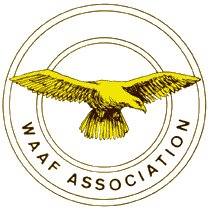
Women in the War
Pauline Walkinton (née Bobbie Dewar)
A Privileged Experience
![]()

 |
Women in the War Pauline Walkinton (née Bobbie Dewar) A Privileged Experience
|
||
 |
|||
| |
Pauline Walkinton trained
as a Radio Operator in the WAAF and was station at Romney Marshes during
the summer of 1940. Her written account follows the recollections she
has of that particluar summer as she recalls her experiences of being
attacked by German bombers. This written account was originally published in the DEHS publication Transmission Lines (Volume 6, Number 3, September 2001) To be a radar operator during WWII was secret, unusual, exacting and a novelty. To be one on Romney Marshes during the summer of 1940 was all these things, plus an honour and a privilege. When in the first few months of that legendary year we worked our 'watches' - one hour each on each piece of equipment in the cramped receiver hut - we gradually realised what a close-knit little gang each watch would become by virtue of being 'on' or 'off' at the same odd hours. In those early days, as the first female personnel on the station, we learnt the work from kind and welcoming RAF male radio operators, or sometimes civilians, who taught us other things like the Morse code, and which RAF slang we might suitably use - and which not. We got to know and trust each other, to find who was best at which job and who really cared about the work. Our main operating practice then was a Dutch airliner which made its way up the Channel daily. At the beginning we recorded the readings from the set with ruler and paper; the operator read the range off the trace, the direction angle from the gonio, and this was converted to a plot on the map. Switch to the height aerials, use the gonio again, assess the number of aircraft and relay all information to the Flight Commander plotter on the other end of the head and breast set. A Goniometre used at the stations to help plot aircraft For more information on radar research and CH / CHL Stations please visit the Radar Research pages on this website Gradually things changed; on the good side, we were fitted with an optical converter - what a joy! A sloping cabinet with a ground glass top over which a spotlight moved geared to the equipment, giving map position and then height reading. This made life a lot easier on the technical side. On the other hand, we were moved to a purpose-built living site, having been billeted in Rye for some months - we weren't too sure about this, but we got used to it, and soon some proper uniform for the WAAF began to trickle through. To start with, we'd only been issued with raincoats, berets and two pairs of navy blue bloomers (passion killers). We threatened a parade solely in what we'd been issued, but relented. The camp, B site as opposed to the station, A site, was a mile or so further to the east of the Rye than the latter, in case of enemy action. There was a contingent of infantry and some ack-ack gunnersat A site living with quarters there. B site was two separate blocks, each three sides of an oblong, one for each sex, with a pathway between; it was set in the middle of flat fields and surrounded by wire and stagnant ditches known as 'dykes'. For most of this time we remained the same little gang of WAAF who came to Rye at the beginning of 1940. We were the second course to be trained at Bawdsey Manor - home of radar - RDF in those days, if mentioned at all - clerk special duties was as far as one could go. Our instructors on the course were RAF ex-radio personnel; the officers were quite junior in rank. As 60 Group became an entity and the various Wings were formed, we in 75 Wing would hear of these officers, several in our HQ, advancing in rank as the chain became bigger. It was really nice when they visited. Civilians too on the technical side were put into uniform according to their civilian rank at Decca or wherever they had been. As time went on we had something new on our screens - an independent flashing signal attached to an echo, called IFF, to identify 'friend from foe'. It took a long time for pilots to get used to the equipment, but at worst it must have been better than nothing. Click here to read on about Pauline's 'Privileged Experience' |